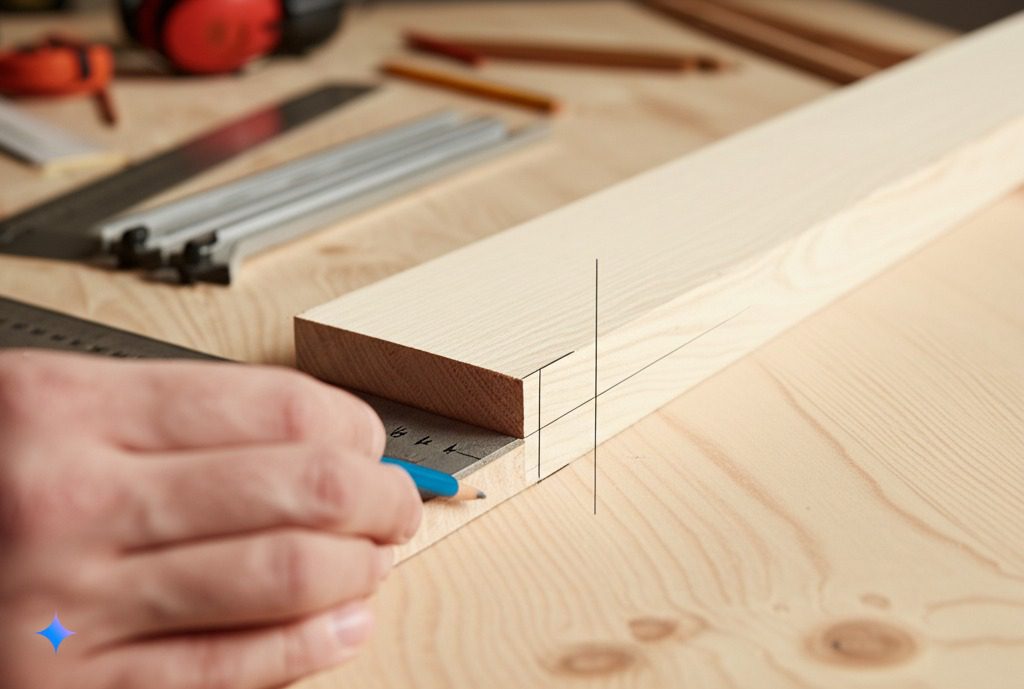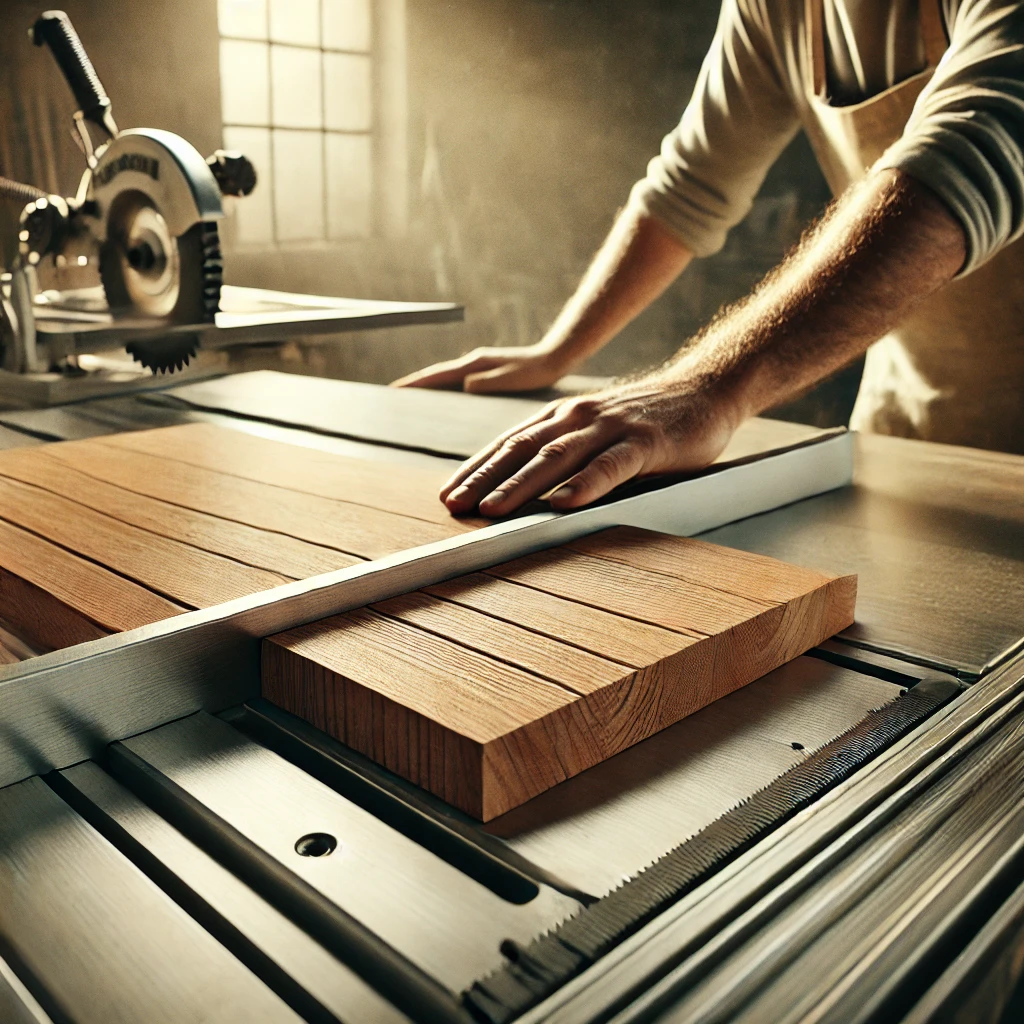Ripping wood with a table saw is one of the most fundamental tasks in woodworking. Whether you’re a beginner or a seasoned woodworker, understanding the process of ripping wood is essential for achieving precise, clean, and safe cuts. This guide will walk you through everything you need to know about ripping wood with a table saw, from the basics of the process to advanced tips for maximizing accuracy and safety.
What Does It Mean to Rip Wood?

Definition of Ripping
Ripping refers to cutting wood along its grain, parallel to the length of the board. This is different from cross-cutting, which involves cutting wood across the grain. Ripping is commonly used to reduce the width of a board or to create narrower pieces from a larger one.
Importance of Ripping in Woodworking
Ripping is a crucial skill in woodworking because it allows you to customize the dimensions of your lumber to fit specific project requirements. Whether you’re building furniture, cabinetry, or decorative items, ripping wood accurately is key to achieving professional-quality results.
How Does a Table Saw Rip Wood?

The Role of the Blade
The table saw blade is the heart of the ripping process. When you feed the wood into the blade, the sharp teeth cut through the fibers of the wood, creating a clean edge. The blade’s design, including the number of teeth and their angle, plays a significant role in the quality of the cut.
The Fence System
The fence is a critical component of the table saw that guides the wood as it passes through the blade. A well-aligned fence ensures that the wood remains straight and parallel to the blade, resulting in an accurate rip cut. Adjusting the fence to the desired width is the first step in the ripping process.
The Motor and Power
The motor powers the blade, determining how efficiently it can cut through the wood. For ripping, a powerful motor is essential, especially when working with hardwoods or thick boards. The speed and torque of the motor influence the smoothness and speed of the cut.
Step-by-Step Guide to Ripping Wood with a Table Saw

Step 1: Safety First
Before you begin, ensure that you have all necessary safety gear, including safety goggles, hearing protection, and push sticks. Make sure the table saw is properly set up and that the blade guard and riving knife are in place.
Step 2: Measure and Mark the Wood
Measure the width you need to rip and mark it clearly on the wood. Use a straightedge or a square to ensure that your mark is accurate and parallel to the edge of the board.
Step 3: Adjust the Fence
Set the fence to the desired width by measuring from the blade to the fence. Double-check the measurement to ensure accuracy. Lock the fence securely in place.
Step 4: Set the Blade Height
Adjust the blade height so that it is slightly higher than the thickness of the wood. This ensures a clean cut and reduces the risk of kickback.
Step 5: Position the Wood
Place the wood on the table saw, ensuring that the marked line aligns with the blade. Hold the wood firmly against the fence, keeping your hands a safe distance from the blade.
Step 6: Start the Saw and Make the Cut
Turn on the table saw and wait for the blade to reach full speed. Slowly feed the wood into the blade, using steady and even pressure. Use a push stick to guide the wood through the blade, keeping your hands safe.
Step 7: Complete the Cut
Continue feeding the wood until it has passed completely through the blade. Turn off the saw and wait for the blade to stop before removing the cut piece.
Tips for Achieving Accurate and Safe Rip Cuts

Use a Sharp Blade
A sharp blade is essential for clean and accurate cuts. Dull blades can cause tear-out and increase the risk of kickback. Regularly inspect and replace your blade as needed.
Ensure Proper Alignment
Check that the blade and fence are perfectly parallel. Misalignment can result in uneven cuts and increase the risk of accidents. Use a combination square or a specialized alignment tool to verify alignment.
Maintain a Steady Feed Rate
Feeding the wood too quickly can cause the blade to bind, while feeding too slowly can result in burn marks. Maintain a steady and consistent feed rate for the best results.
Use a Push Stick
Always use a push stick to guide the wood through the blade, especially when ripping narrow pieces. This keeps your hands at a safe distance from the blade and reduces the risk of injury.
Check for Knots and Defects
Inspect the wood for knots, cracks, or other defects that could affect the cut. These areas can cause the blade to bind or kick back, so proceed with caution.
Common Mistakes to Avoid When Ripping Wood
Ignoring Safety Precautions
Failing to use safety gear or bypassing safety features like the blade guard and riving knife can lead to serious injuries. Always prioritize safety when operating a table saw.
Incorrect Fence Alignment
An improperly aligned fence can result in inaccurate cuts and increase the risk of kickback. Always double-check the fence alignment before making a cut.
Forcing the Wood
Forcing the wood through the blade can cause the blade to bind and increase the risk of kickback. Let the blade do the work and feed the wood at a steady pace.
Not Using a Push Stick
Failing to use a push stick when ripping narrow pieces can put your hands dangerously close to the blade. Always use a push stick to maintain a safe distance.
Advanced Techniques for Ripping Wood
Ripping Thin Strips
Ripping thin strips requires extra caution. Use a zero-clearance insert to prevent small pieces from falling into the blade opening. Consider using a featherboard to hold the wood firmly against the fence.
Ripping Long Boards
Ripping long boards can be challenging due to their size and weight. Use outfeed supports or roller stands to help manage the length and keep the board stable as it passes through the blade.
Ripping Hardwoods
Hardwoods are denser and harder to cut than softwoods. Use a blade with fewer teeth and a more aggressive tooth angle for better performance. Ensure the blade is sharp and the motor is powerful enough to handle the task.
FAQs (Frequently Asked Questions)
What is the Best Blade for Ripping Wood?
A rip-cut blade with fewer teeth (24-30) and a flat-top grind is ideal for ripping wood. These blades are designed to cut efficiently along the grain.
How Do I Prevent Kickback When Ripping Wood?
To prevent kickback, always use a riving knife, keep the blade height slightly above the wood, and maintain a steady feed rate. Avoid forcing the wood through the blade.
Can I Rip Plywood with a Table Saw?
Yes, you can rip plywood with a table saw. Use a fine-tooth blade to minimize tear-out and support the plywood with infeed and outfeed supports to prevent sagging.
How Do I Ensure a Straight Rip Cut?
Ensure the fence is perfectly parallel to the blade and use a push stick to guide the wood steadily through the blade. A featherboard can also help keep the wood against the fence.
What Should I Do If the Blade Binds During a Rip Cut?
If the blade binds, turn off the saw and wait for the blade to stop before attempting to remove the wood. Check for misalignment, dull blades, or defects in the wood that may have caused the binding.
Conclusion
Ripping wood with a table saw is a fundamental skill that every woodworker should master. By understanding the process, following safety precautions, and using the right techniques, you can achieve precise and clean rip cuts for your projects. Whether you’re working with hardwoods, plywood, or long boards, the key to success lies in proper setup, steady feeding, and regular maintenance of your tools.
Final Tips for Success
- Always prioritize safety: Use safety gear and follow best practices to minimize risks.
- Keep your tools in good condition: Regularly inspect and maintain your table saw and blades.
- Practice makes perfect: The more you practice ripping wood, the more confident and skilled you’ll become.
By following this guide, you’ll be well-equipped to rip wood with confidence and precision, ensuring that your woodworking projects turn out beautifully every time.

Finlay Connolly is a woodworking enthusiast and power tool specialist with over a decade of hands-on experience in the workshop. As the founder and lead writer at ProTableSawReviews.com, Finlay combines expert knowledge with real-world testing to help woodworkers, DIYers, and professionals choose the best tools for the job. With a sharp eye for detail and a passion for precision, Finlay is committed to providing trustworthy, practical advice backed by years of experience and research in the field. Whether you’re cutting dados or comparing fence systems, you can count on Finlay for honest, reliable reviews that make your next cut your best one.
